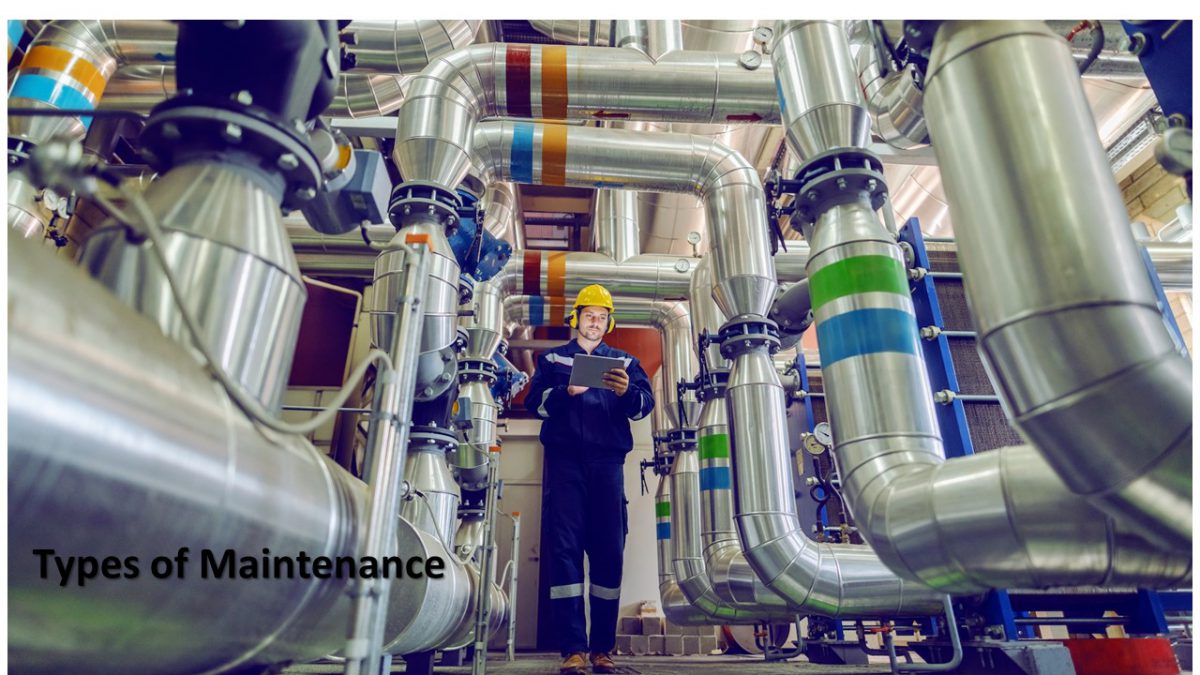Comprehensive Guide to Different Types of Maintenance
In today’s dynamic and competitive business landscape, organizations face increasing pressure to maximize the performance and longevity of their assets and infrastructure.
The efficient management of maintenance processes plays a crucial role in achieving these objectives. By implementing effective maintenance strategies, organizations can minimize costly downtime, extend asset lifespan, reduce overall maintenance costs, and enhance operational efficiency.
In this article, we will delve into the various types of maintenance methodologies that organizations can leverage to optimize asset performance and drive productivity. By exploring these approaches, businesses can gain valuable insights into how to streamline their maintenance practices and achieve sustainable success in their respective industries.
- Preventive Maintenance: Preventive maintenance aims to prevent asset failures by adhering to a proactive schedule of inspections, routine servicing, and component replacements. By identifying and addressing potential issues before they escalate, organizations can minimize downtime, extend asset lifespan, and reduce overall maintenance costs. Predictive analytics and real-time data enable businesses to schedule preventive maintenance tasks, ensuring optimal asset health and performance.
- Corrective Maintenance: Corrective maintenance, also known as reactive or breakdown maintenance, involves addressing repairs or replacements after an asset failure has occurred. While it is not a proactive approach, it is essential for addressing unexpected breakdowns and minimizing downtime. Prompt fault detection and notification systems enable maintenance teams to quickly respond and initiate corrective actions, optimizing resource allocation and reducing downtime.
- Predictive Maintenance: Predictive maintenance utilizes advanced analytics and condition monitoring techniques to predict asset failures and identify optimal intervention points. By analyzing historical data and performance indicators, organizations can proactively address issues before they lead to failures. Cutting-edge algorithms provide accurate insights into asset health and predict impending failures, reducing maintenance costs and enhancing reliability.
- Condition-Based Maintenance: Condition-based maintenance (CBM) relies on real-time asset condition monitoring to determine the optimal time for maintenance activities. By continuously monitoring critical parameters, organizations can detect deviations from normal operating conditions and take necessary action. Integrated sensor networks and data analysis facilitate seamless implementation of CBM strategies, ensuring efficient maintenance practices.
- Proactive Maintenance: Proactive maintenance focuses on eliminating the root causes of asset failures by identifying and addressing underlying issues. Regular inspections, equipment audits, and process improvements play a crucial role in this approach. By identifying potential risks and implementing preventive measures, organizations improve operational efficiency and reduce maintenance costs over time.
Implementing the right maintenance strategy is vital for organizations to ensure optimal asset performance and minimize downtime. By leveraging preventive, corrective, predictive, condition-based, and proactive maintenance techniques, businesses can optimize asset performance, enhance reliability, and reduce overall maintenance costs. Embrace the power of effective maintenance practices with Geomap cloud-based platform to unlock the full potential of your assets today.
In addition to the specific types of maintenance discussed above, it’s important to note that organizations should adopt a holistic approach to maintenance management. This involves establishing clear maintenance objectives, leveraging software technology and data analytics for informed decision-making, and fostering a culture of continuous improvement. By aligning maintenance strategies with business goals, organizations can optimize asset performance, increase operational efficiency, and drive sustainable growth. Embracing best practices and staying updated with advancements in maintenance methodologies will ensure that organizations remain competitive in today’s ever-evolving business landscape.
Tags In
Recent Posts
- Enhancing Healthcare Efficiency: A Comprehensive Guide to Facility Management Software Implementation
- The Power of Enterprise Asset Management (EAM) Software in Modern Business
- Facility Management Software and AI: The Future of Building Operations
- Understanding MTTF and MTTR in Facility Management: Keys to Efficiency


